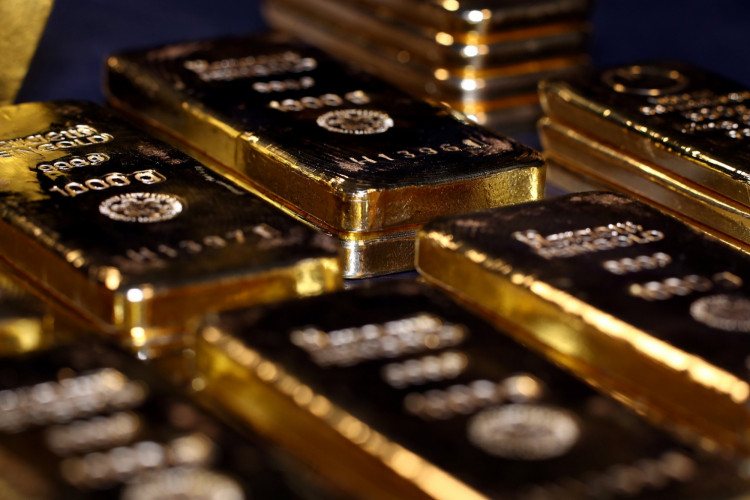This year, gold has undoubtedly emerged as a top performer among safe-haven assets.
Amid the Israel-Palestine conflict, international gold prices surged past $2,000 per ounce. Domestically, a younger generation has been eagerly investing in gold, with sales of gold bars and coins surging by 15.98%.
Historically, the real interest rate of U.S. Treasury bonds has been a significant determinant of gold prices. However, since 2022, aggressive gold purchases by central banks have disrupted this correlation, with geopolitical tensions further stoking the flames.
With the backing of geopolitical "conflicts" and "central banks," is gold entering a new "safe-haven era"?
1. Gold's Grand Narrative - Geopolitical Conflicts
The saying goes, "When cannons fire, gold prices soar." Since 2022, due to geopolitical tensions like the Russia-Ukraine and Israel-Palestine conflicts, the demand for gold as a safe haven has risen, leading to a noticeable geopolitical risk premium on gold prices.
But how much can geopolitical narratives truly bolster gold prices?
An analysis by Lightell of gold's performance following major geopolitical conflicts since the 1980s found that the impact of such conflicts on gold prices tends to be shorter than expected:
- Gold prices were mixed on the day of or the day after a conflict event.
- Gold prices typically peaked around the 15th trading day following a conflict.
- Within 30 trading days, gold's average price increase was approximately 5.85%.
- The influence of the conflict on gold prices began to wane after 50 trading days.
(Note: Gold prices are based on the closing price of the COMEX gold futures contract.)
For instance, after last year's Russia-Ukraine conflict, gold prices rebounded due to safe-haven demand. However, as the Federal Reserve began its interest rate hike cycle and real interest rates moved out of negative territory, gold's rally eventually reversed.
2. Gold's Major Buyer - Central Bank Purchases
In recent years, the U.S.'s misuse of the dollar's reserve currency status has weakened its traditional position. Consequently, global central banks have been net buyers of gold annually since 2010, especially emerging market countries affected by the dollar. Between 2010 and 2022, central banks purchased a total of 6,815 tons of gold.
Following the Russia-Ukraine conflict, sanctions imposed on Russia by the U.S. and European countries challenged the safe-haven attribute of reserve currencies. This led to a renewed push for diversifying foreign exchange reserves, further increasing gold reserves.
According to the World Gold Council, central bank gold purchases surged in 2022, reaching 1,082 tons for the year, a significant increase from the global gold demand increase of 42 tons in 2022.
3. The Dawn of Gold's "Safe-Haven Era"?
However, during the second quarter of both last year and this year, even with the backing of geopolitical tensions and central banks, gold prices still faced significant downward pressure, with the most significant declines reaching 20% and 10%, respectively.
Therefore, if we consider gold as part of an asset allocation strategy, the macroeconomic cyclical factors driving gold prices, such as real interest rates, economic growth, inflation, monetary policy, and the U.S. dollar, remain crucial.
Currently, with persistently high and potentially rising real interest rates, gold, as a zero-interest asset, will continue to face pressure. The world's largest holder of gold financial assets, SPDR, has reduced its gold holdings to 860 tons, a four-year low.
Whether the current price of $2,000 per ounce is a peak or a new starting point for gold, and whether we're entering a safe-haven era or a risk era, remains a matter of perspective.






